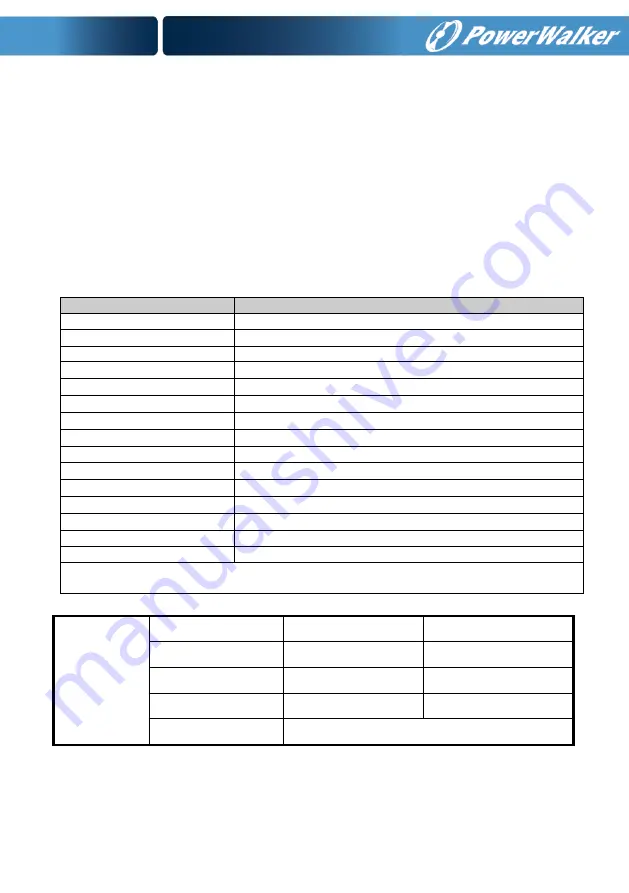
ENGLISH
Setting correct EBM (External Battery Module) quantity is critical for reaching the desired
backup time. Only if this value is set correctly, UPS will be able to maximize the battery
usage. The value represents amount of original battery packs fitted with 2 strings of 9Ah
batteries.
XVII.
Configuring Load Segment
Load segments are groups of outlets that can be configured through the display. VFI RT
HID models have two configurable load segments. When UPS is turned on (it has
activated output), you can turn off a load segment. If the UPS is turned off (no output),
then a load segment cannot be turned on.
XVIII.
Bypass Mode
If the bypass is set to enabled (value = 001), then the UPS would provide output to the
load as long as there is input. Turning off the UPS would essentially switch off the inverter
and supply unfiltered power to the load.
XIX.
UPS Status Display String
LCD Display String
Description
STbY
UPS work at Standby mode (no output)
LINE
UPS work in Line mode
bYPA
UPS work in Bypass mode (no backup function!)
bATT
UPS work in Battery mode (no AC input)
TEST
UPS work in battery life/function test mode
ECO
UPS work in ECO mode
CVCF
UPS work in converter mode
SITE
Site fail, check input connection
FANF
Fan fail, check if fan is not blocked
bLOW
Battery low, recharge or replace batteries
bOPN
Battery open, check battery circuit connection
bATF
Battery fault, replace batteries
EPO
EPO, deactivate EPO
OVLD
Overload, disconnect load
AMbH
Ambient temperature too high
For following errors contact our technical support: CHGF / TEPH / SHOR / ISFT / bSFT / OVTP /
INVL / INVH / bUSH / bUSL / bUSE / bUSS / HIGH / NTCO
XX.
Indicators and Audible alarm
Audible alarm
Backup Mode
Sounding every 4seconds
“bATT” on the screen
Low Battery
Sounding every second
“bLOW” on the screen
UPS Fault
Continuously Sounding
Red display
Overload
Sounding every second
“OVLD” on the screen
Battery Replacement
Sounding every second
Alarm can be muted when it is activated, but it will sound in case of low battery, fan
fault, overheat and other major fault.
XXI.
Technical Specification
























